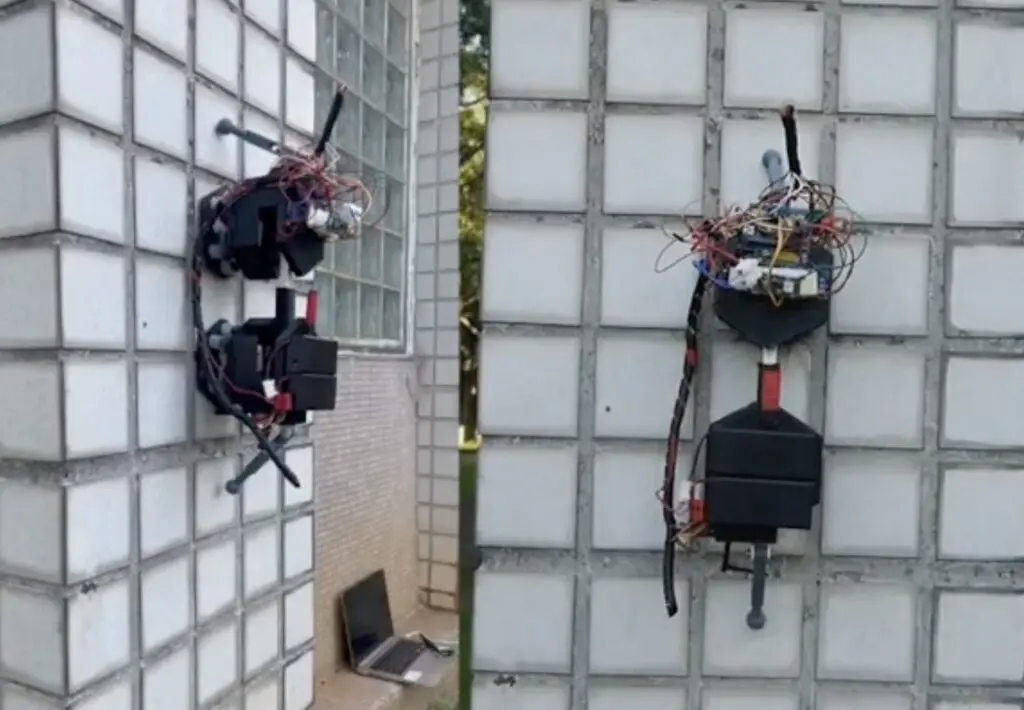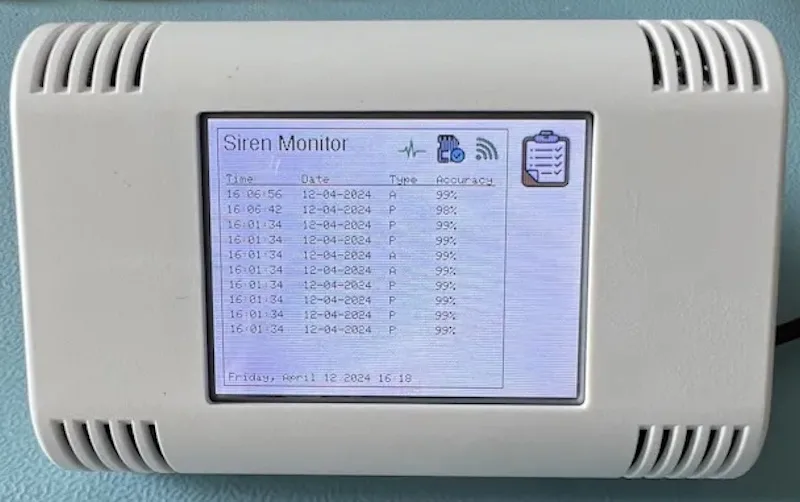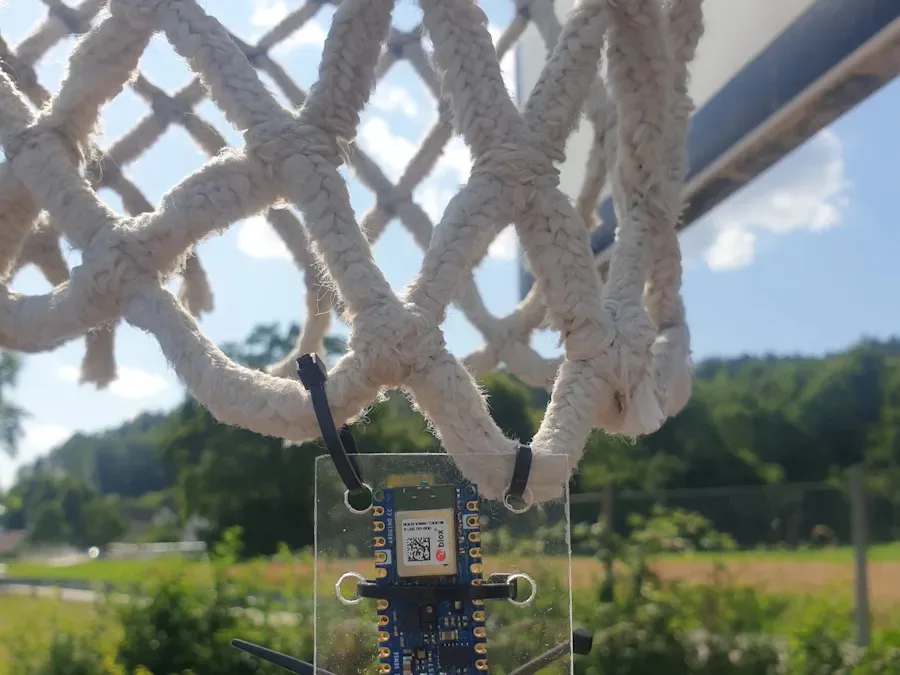Schlagwort: Nano 33 BLE Sense
-

Gathering weather telemetry with a Nano 33 BLE Sense payload
Reading Time: 2 minutesMost model rockets don’t do anything practical — they just go up really fast and then come back down more slowly to land in a field somewhere. Those launches can still be a lot of fun to watch, but they aren’t exactly useful. However, the sky has plenty of data of worth…
-

Making fire detection more accurate with ML sensor fusion
Reading Time: 2 minutesThe mere presence of a flame in a controlled environment, such as a candle, is perfectly acceptable, but when tasked with determining if there is cause for alarm solely using vision data, embedded AI models can struggle with false positives. Solomon Githu’s project aims to lower the rate of incorrect detections with a multi-input…
-

A gamified approach to therapy and motor skills testing
Reading Time: 2 minutesFor children who experience certain developmental delays, specific types of physical therapies are often employed to assist them in improving their balance and motor skills/coordination. Ivan Hernandez, Juan Diego Zambrano, and Abdelrahman Farag were looking for a way to quantify the progress patients make while simultaneously presenting a gamified approach, so they developed…
-

GLEWBOT scales buildings like a gecko to inspect wall tiles
Reading Time: 2 minutesA great deal of building maintenance expenses are the result of simple inaccessibility. Cleaning the windows are your house is a trivial chore, but cleaning the windows on a skyscraper is serious undertaking that needs specialized equipment and training. To make exterior wall tile inspection efficient and affordable, the GLEWBOT team turned…
-

Classify nearby annoyances with this sound monitoring device
Reading Time: 2 minutesSoon after a police station opened near his house, Christopher Cooper noticed a substantial increase in the amount of emergency vehicle traffic and their associated noises even though local officials had promised that it would not be disruptive. But rather than write down every occurrence to track the volume of disturbances, he came up with…
-

Improve recycling with the Arduino Pro Portenta C33 and AI audio classification
Reading Time: 2 minutesIn July 2023, Samuel Alexander set out to reduce the amount of trash that gets thrown out due to poor sorting practices at the recycling bin. His original design relied on an Arduino Nano 33 BLE Sense to capture audio through its onboard microphone and then perform edge audio classification with an…
-

Fortune Cat uses embedded speech recognition to predict your future
Reading Time: 2 minutesFor well over one hundred years, people have been constructing machines that dispense fortunes to those who ask at the insertion of a coin and the push of a button. In modern days, this has taken the form of mobile apps that can be far more expansive, albeit with a lack of…
-

Improving comfort and energy efficiency in buildings with automated windows and blinds
Reading Time: 2 minutesWhen dealing with indoor climate controls, there are several variables to consider, such as the outside weather, people’s tolerance to hot or cold temperatures, and the desired level of energy savings. Windows can make this extra challenging, as they let in large amounts of light/heat and can create poorly insulated regions, which…
-

Nothin’ but (neural) net: Track your basketball score with a Nano 33 BLE Sense
Reading Time: 2 minutesWhen playing a short game of basketball, few people enjoy having to consciously track their number of successful throws. Yet when it comes to automation, nearly all systems rely on infrared or visual proximity detection as a way to determine when a shot has gone through the basket versus missed. This is…
-

This recycling bin sorts waste using audio classification
Reading Time: 2 minutesAlthough a large percentage of our trash can be recycled, only a small percentage actually makes it to the proper facility due, in part, to being improperly sorted. So as an effort to help keep more of our trash out of landfills without the need for extra work, Samuel Alexander built a smart recycling…
-

This stretchable wearable sensor provides accurate knee tracking
Reading Time: 2 minutesHealth tracking is a vital component to recovering after an injury or simply trying to improve one’s own fitness, and although accelerometer-based devices are decent at tracking general activity, they fail to accurately monitor specific areas of the body such as joint movement. This is why a team of researchers from the…
-

Is it too loud? This Arduino device will do the shushing for you
Reading Time: 2 minutesWhether it is a library, conference room, school classroom, or some other public space, we all require peace and quiet to work sometimes, but achieving it can be a challenge. After wondering if loudmouths could be automatically asked to be silent via some kind of sensor-driven system, Bas op ten Berg, the founder…
-

This machine uses cornstarch to fashion biodegradable pottery
Reading Time: 2 minutesThe art of making pottery has existed for tens of thousands of years, and the materials used have stayed relatively similar as nearly all items were made from clay which was left to harden either from the sun or via a kiln. But for those who wish to do only a little…
-

Monitoring hospital bed occupancy with an Arduino Nano 33 BLE Sense
Reading Time: 2 minutesIn care facilities and hospitals, being able to tell when beds are occupied or free is vital knowledge for the staff, as they can move onto other tasks more quickly with up-to-date information. Adam Milton-Barker’s hospital bed occupancy detection system aims to accomplish this goal by combining embedded machine learning models and connected hardware…
-

Using sensor fusion and tinyML to detect fires
Reading Time: 2 minutesThe damage and destruction caused by structure fires to both people and the property itself is immense, which is why accurate and reliable fire detection systems are a must-have. As Nekhil R. notes in his write-up, the current rule-based algorithms and simple sensor configurations can lead to reduced accuracy, thus showing a…
-

This DIY Apple Pencil writes with gestures
Reading Time: 2 minutesReleased in 2015, the Apple Pencil is a technology-packed stylus that allows users to write on iPad screens with variations in pressure and angle — all while communicating with very low latencies. Nekhil Ravi and Shebin Jose Jacob of Coders Café were inspired by this piece of handheld tech to come up with their own…
-

Predicting potential motor failures just using sound
Reading Time: 2 minutesNearly every manufacturer uses a machine at some point in their process, and each of those machines is almost guaranteed to contain at least one motor. In order to maintain uptime and efficiency, these motors must always work correctly, as even a small breakdown can lead to disastrous effects. Predictive maintenance aims…
-

Detect vandalism using audio classification on the Nano 33 BLE Sense
Reading Time: 2 minutesHaving something broken into and/or destroyed is an act that most people hope to avoid altogether or at least catch the perpetrator in the act when it does occur. And as Nekhil R. notes in his project write-up, traditional deterrence/detection methods often fail, meaning that a newer type of solution was necessary.…
-

This wearable cough monitor can help improve respiratory disease detection
Reading Time: 2 minutesA large number of diseases involve coughing as one of their primary symptoms, but none are quite as concerning as chronic obstructive pulmonary disease (COPD), which causes airflow blockages and other breathing problems in those afflicted by it. Consistently monitoring the frequency and intensity of coughing is vital for tracking how well…
-

Preventing excessive water consumption with tinyML
Reading Time: 2 minutesAs the frequency and intensity of droughts around the world continues to increase, being able to reduce our water usage is vital for maintaining already strained freshwater resources. And according to the EPA, leaving a faucet running, whether intentionally or by accident for just five minutes can consume over ten gallons of…





















